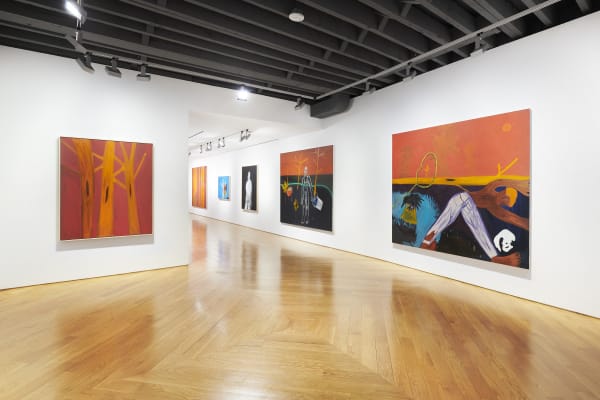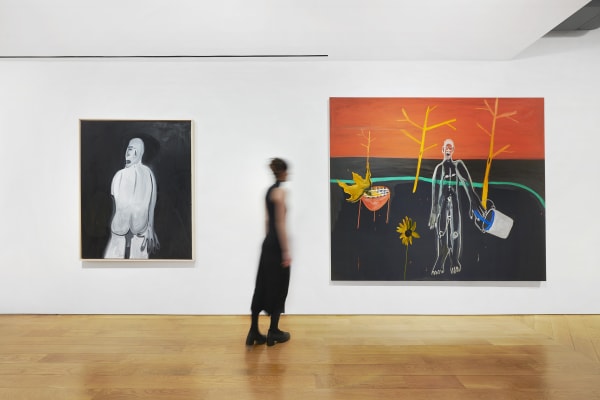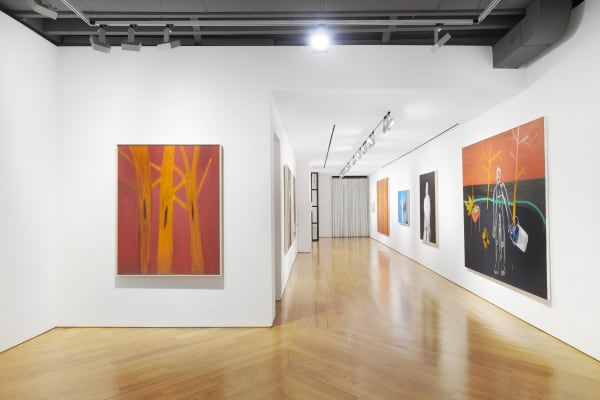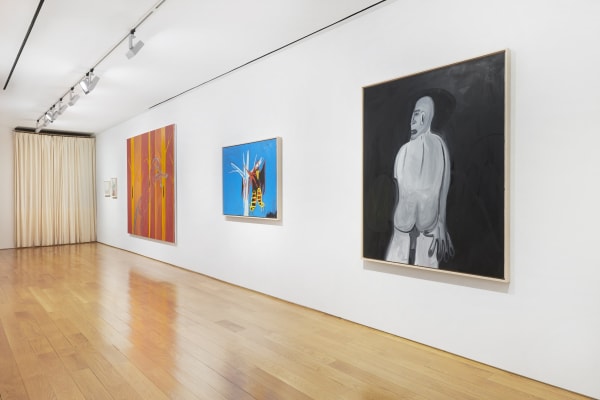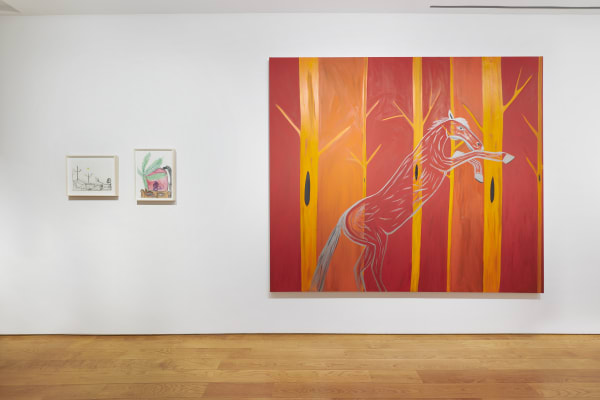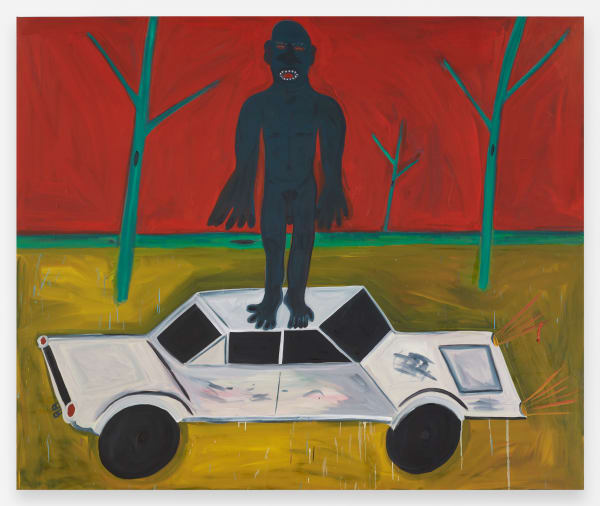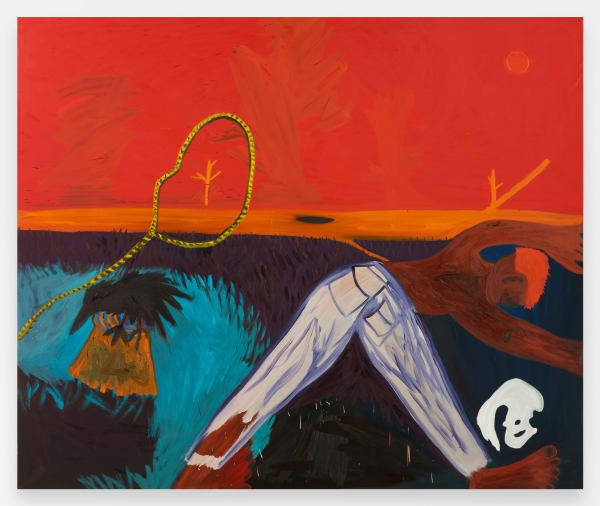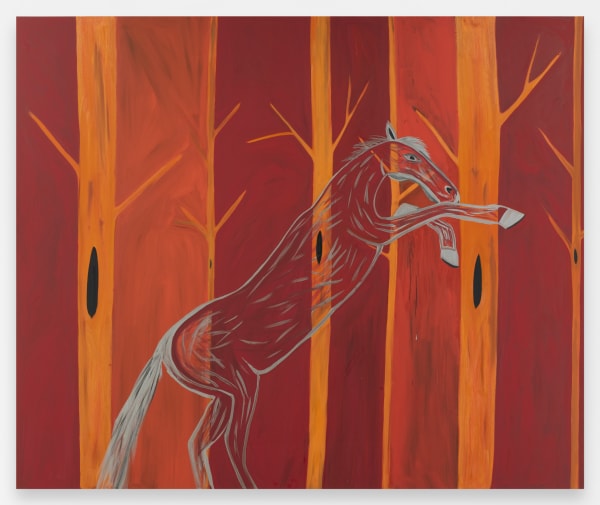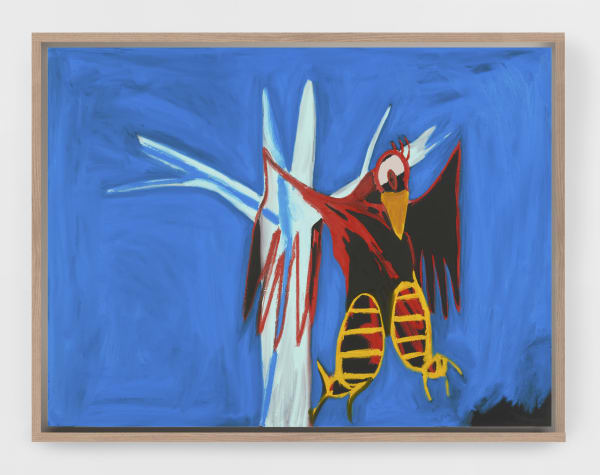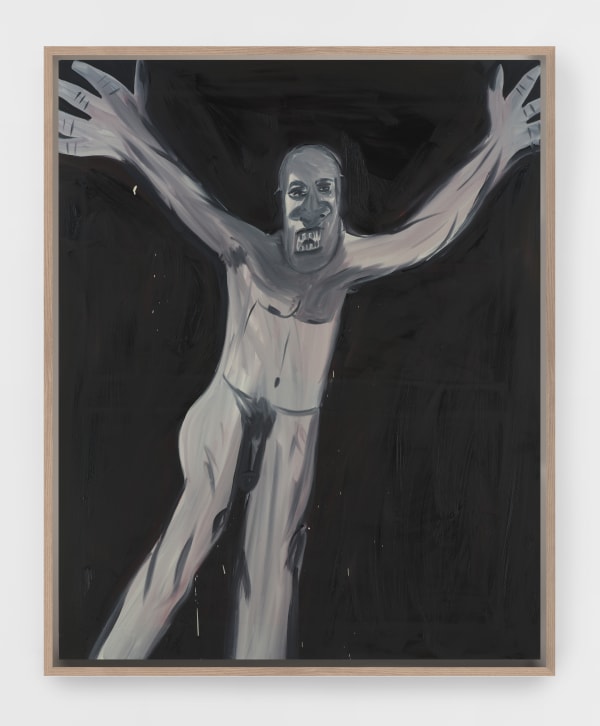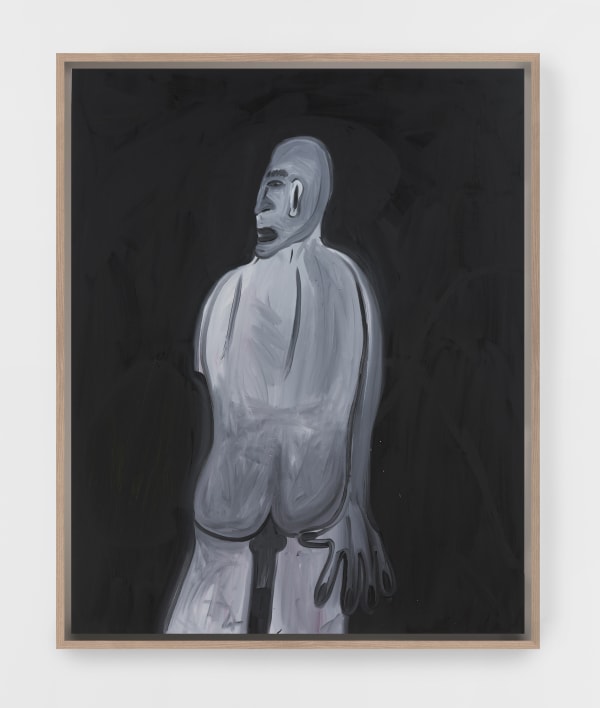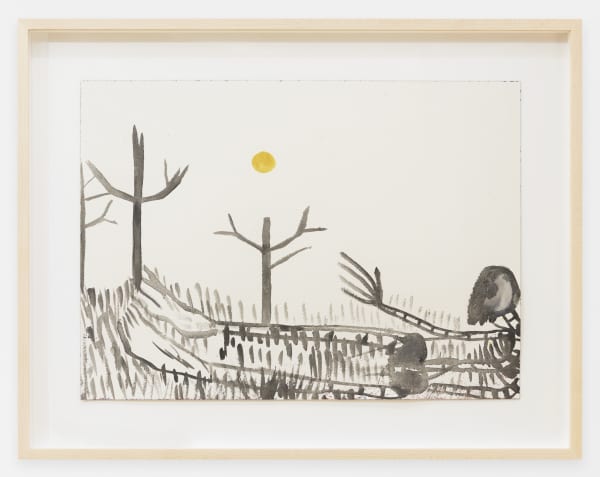Mining: Marcus Jahmal
Anton Kern Gallery is proud to present Marcus Jahmal’s first solo exhibition with the gallery, Mining, on the third floor. Jahmal is a self-taught painter, born and raised in Brooklyn, with familial roots in Louisiana and Texas. Jahmal’s paintings are surreal, symbological narratives that exist as documents of our current moment, yet also embody a mythological timelessness. The title, Mining, takes on a number of meanings—mining for materials like silver or gold; mining for oil (a particularly personal meaning as his great grandmother owned an oil well in Texas); Also, the notion of mining within one’s own psyche. The heavy use of black oil paint references this idea throughout each of the paintings, and the work is charged with an intuitive sense of image and color to evoke the ways in which the personal belies larger implications of the universal and the mysterious.
Jahmal does not prepare studies for his paintings, but rather goes at the canvas directly. He begins by grounding them with a simple color. In his own words, “setting a mood.” From there, figures and icons emerge—a man, a barbecue, a car, trees, a bird, a lasso, a horse—existing in an almost frozen dreamlike state. The burning red-orange that runs throughout these paintings is reminiscent of the sky of dwarf sun planets, red due to their close proximity to the sun. That feeling of intense heat and fire is palpable here, radiating off the canvases. The orange, black, and otherworldly green that populate the works serve to create dystopian psychological scenes told through landscape with symbols, images, and color.
In one of the larger paintings, Excavation, we see a man bending over in torn clothes on a black ground with a blazing red-orange sky; a fallen orange tree creates the horizon line behind him. Further back, we see smaller standing trees and a distant sun. Joining the man in the foreground are a bird, a lasso, and a skull. This improbable—almost cinematic—scene is ripe with visual double entendres and references. The lasso is also reminiscent of a noose; the tree it encircles looks almost like a cross. The fallen tree and the torn clothing on the man are reminiscent of motifs found in Georg Baselitz’s early paintings. The artist and German Expressionism in general are an influence on Jahmal—seen not only in the imagery but also in the transparency and glow of his paintings, as well as the overall expressive quality that can only be achieved through large gestural sweeps and physicality. The black paint, in this and other works, refers directly to oil and his grandmother’s well in Texas, which was a frequent topic of discussion throughout his childhood. The meaning increases as he is invoking not only oil, but then oil paint.
One of Jahamal’s strengths is color, used both to surprise and to symbolize. Its idiosyncratic treatment by the artist serves to further the wonder of each painting and creates a feeling of marvel as he approaches it with ferocity and hunger. Roberta Smith previously noted in the New York Times that Jahmal’s “main love is colour, which he uses stunningly, but he exploits everything–space, surface, colour, image–to create various incongruities.” Color is the vehicle through which the artist expresses an acute perception of the multitude of forces colliding constantly in our lives. For example, in Living off the land, we see a car—normally a flat, matte, singular color—surprisingly lush, with built up layers of soft cream and dapples of green and pink pastels, which then contrast intensely with the dark colors of the screaming figure standing on top of it. All takes place in an unsettling green ground and a fiery red sky. The surprising lightness of the car is matched in the teeth of the lone dark figure, bared in a guttural scream and intensified by both the contrast and the mirroring. The headlight beams are like unexpected bursts of red fire with a singular thick painterly drip trickling down through them; Jahmal’s paintings have evolved recently, with a looser hand, embracing the unintended drips and splashes of paint that appear as he works his brush.
In addition to four large symbological landscape paintings, there is also a series of three smaller paintings which feature lone figures in a black background. Each emerges from the void expressing an anxious urgency, looking directly at the viewer and creating an immediacy of purpose. Rounding out the presentation of paintings are two smaller works that feature singular imagery found in the larger: one, a set of red-orange trees; the other a lone bird—a phoenix—that nearly doubles for a Crucifixion scene. For the first time, Jahmal will also exhibit watercolor drawings alongside the paintings, wherein he deftly relishes in the medium’s possibility for complex, vibrantly colored compositions. In all, Jahmal’s debut solo exhibition at Anton Kern Gallery is an expression of his thirst for exploring the possibilities of paint and color. There is never a clear message or answer in Jahmal’s work. The meaning is in the process, and in the experience of making and looking. The paintings embrace the complexity and ambiguity of humanity, where mining—in all senses of the word—can always go deeper.
-
 Marcus Jahmal, Silver Disappearance, 2021
Marcus Jahmal, Silver Disappearance, 2021 -
 Marcus Jahmal, Living off the land, 2021
Marcus Jahmal, Living off the land, 2021 -
 Marcus JahmalExcavation, 2021
Marcus JahmalExcavation, 2021 -
 Marcus JahmalGallop into existence, 2021
Marcus JahmalGallop into existence, 2021
-
 Marcus JahmalTree still, 2021
Marcus JahmalTree still, 2021 -
 Marcus JahmalPhoenix, 2021
Marcus JahmalPhoenix, 2021 -
 Marcus JahmalScarecrow, 2021
Marcus JahmalScarecrow, 2021 -
 Marcus JahmalInner glow, 2021
Marcus JahmalInner glow, 2021

